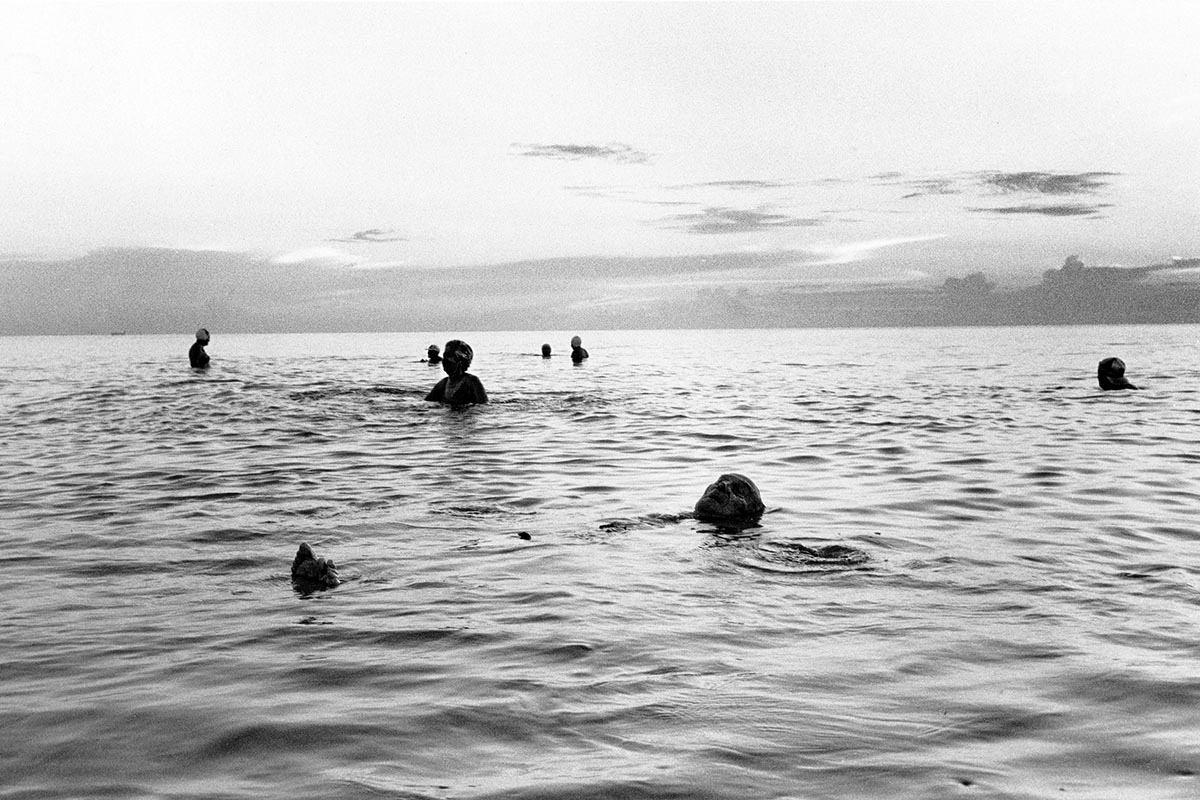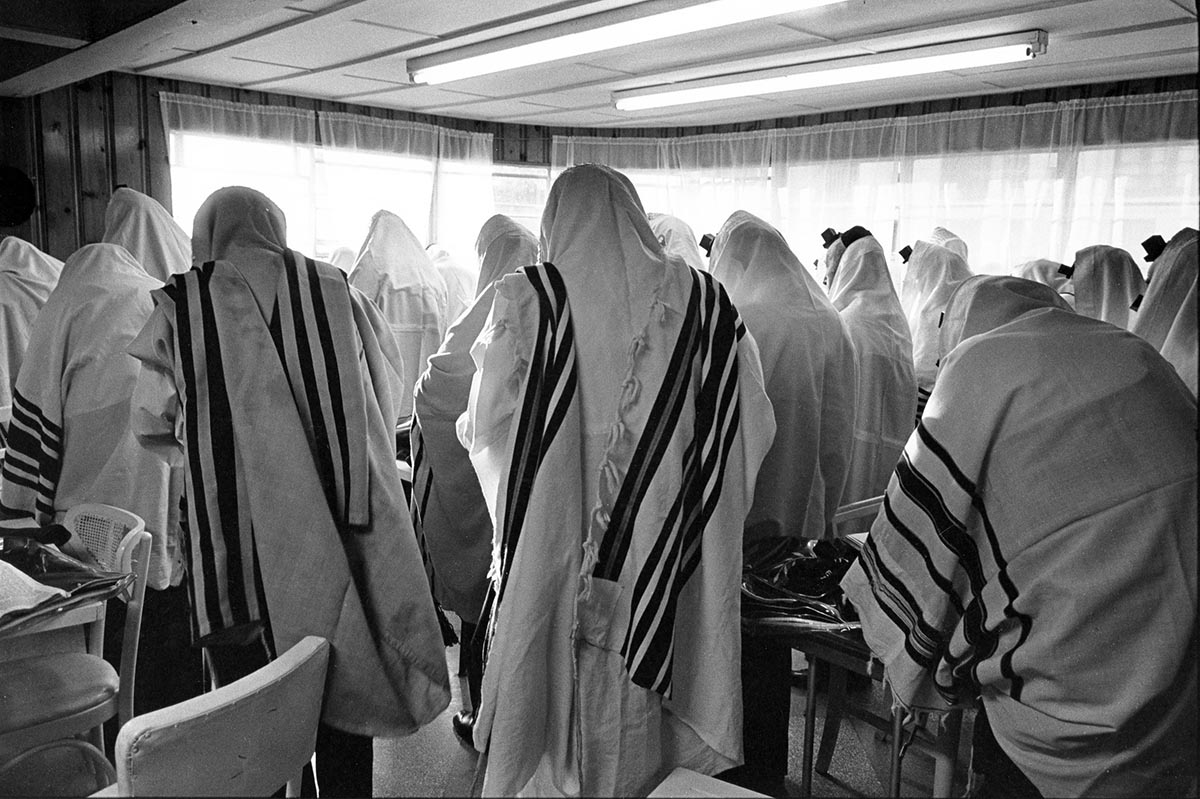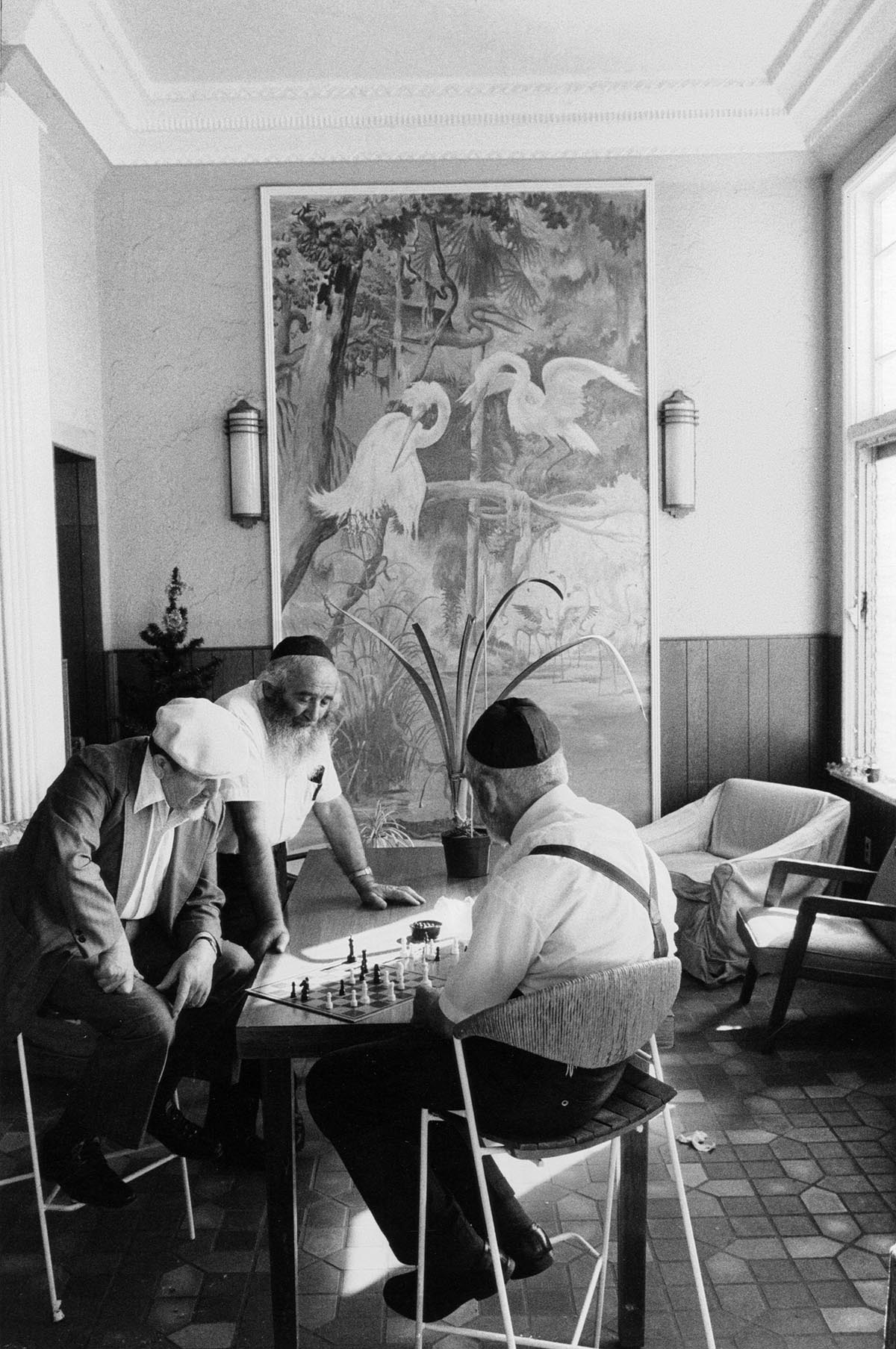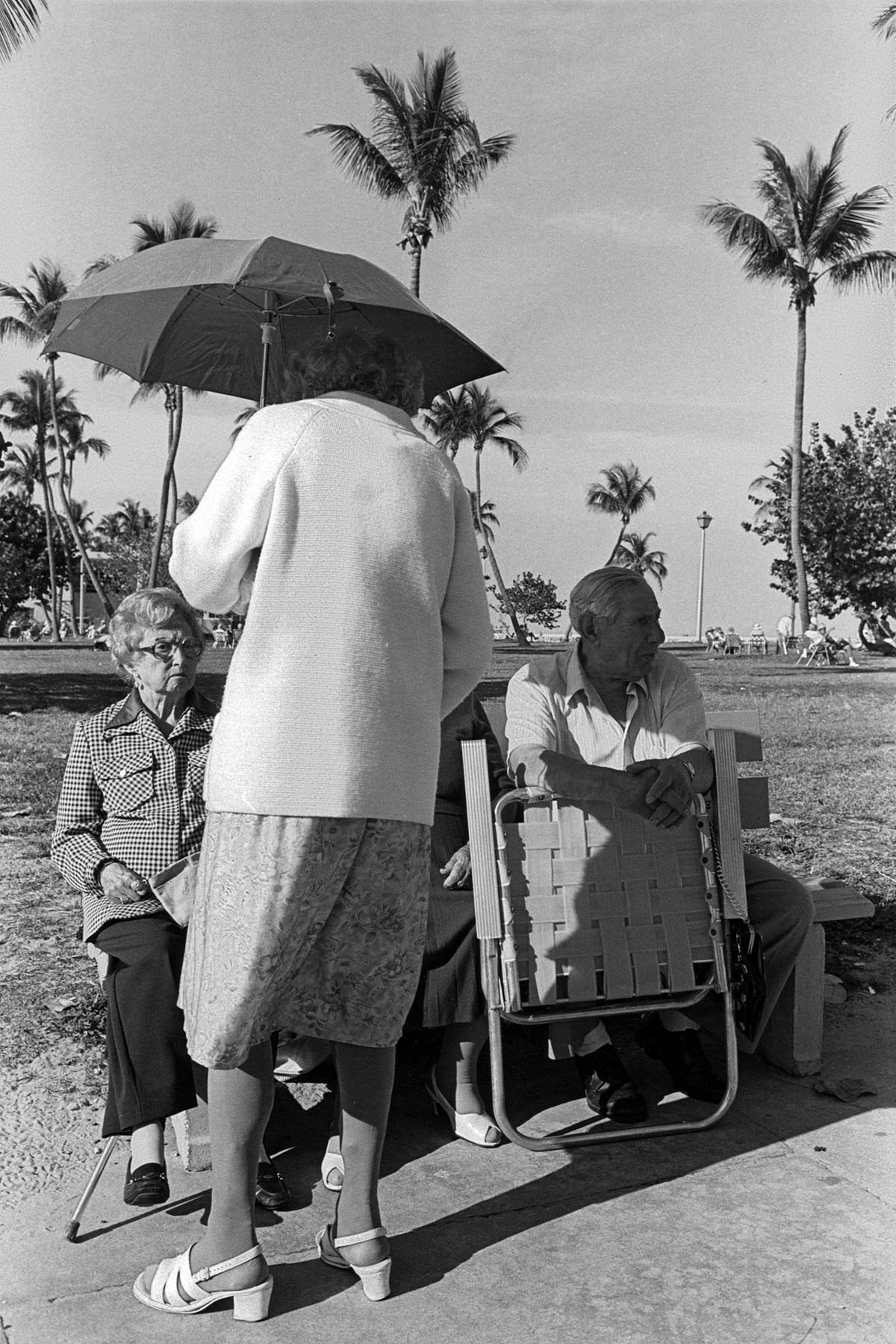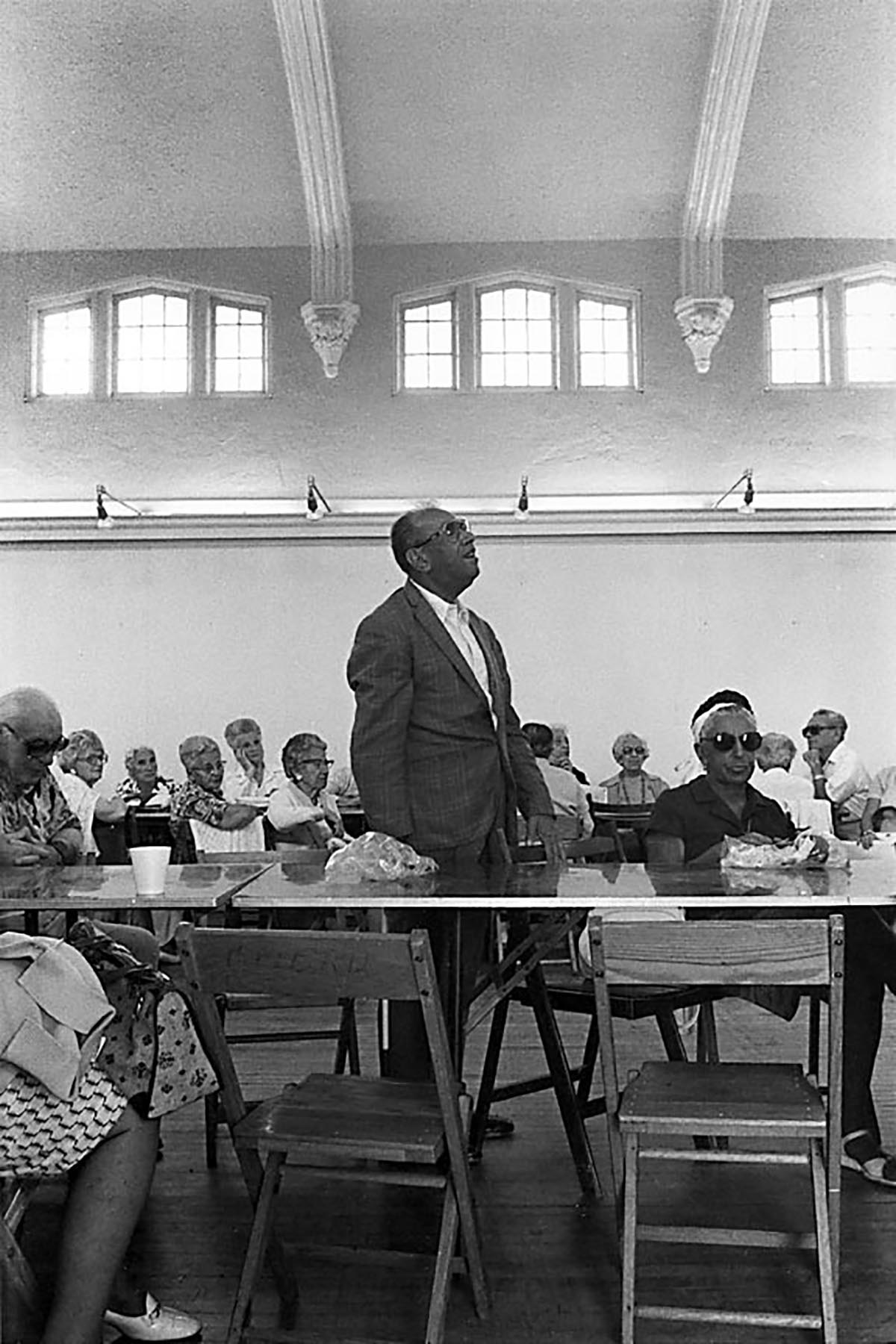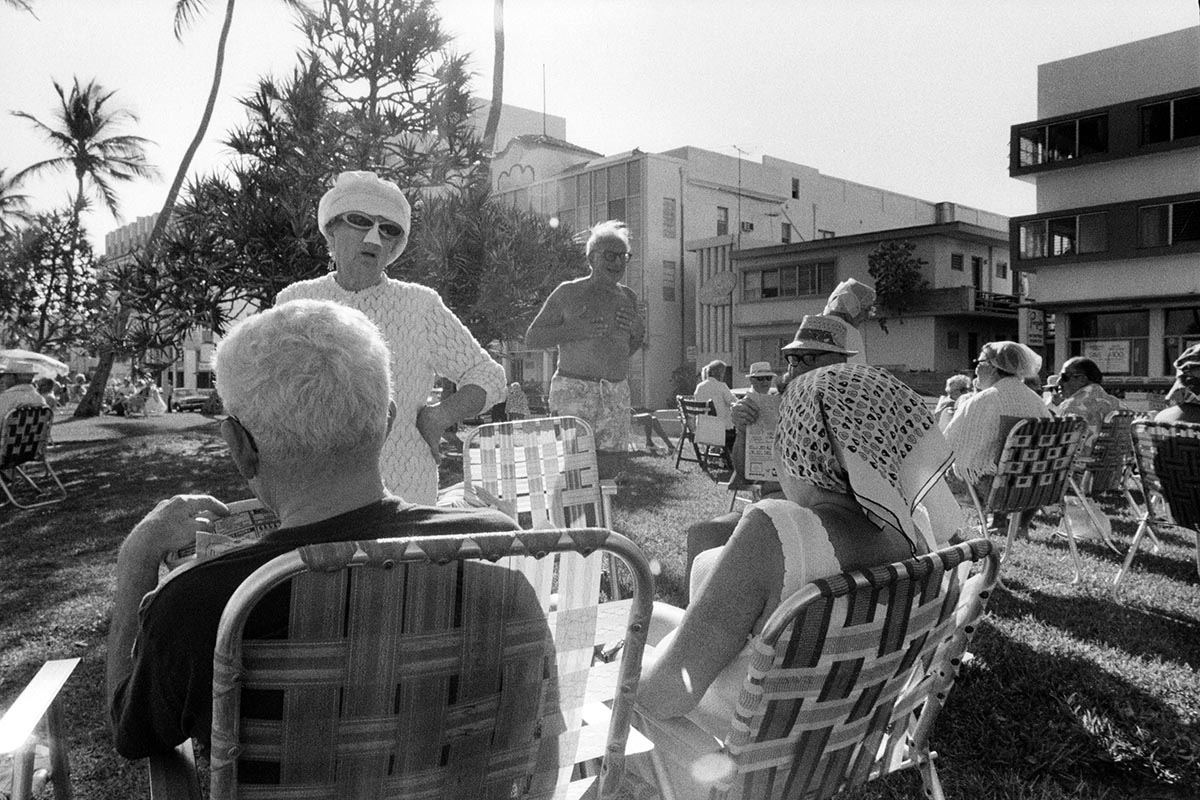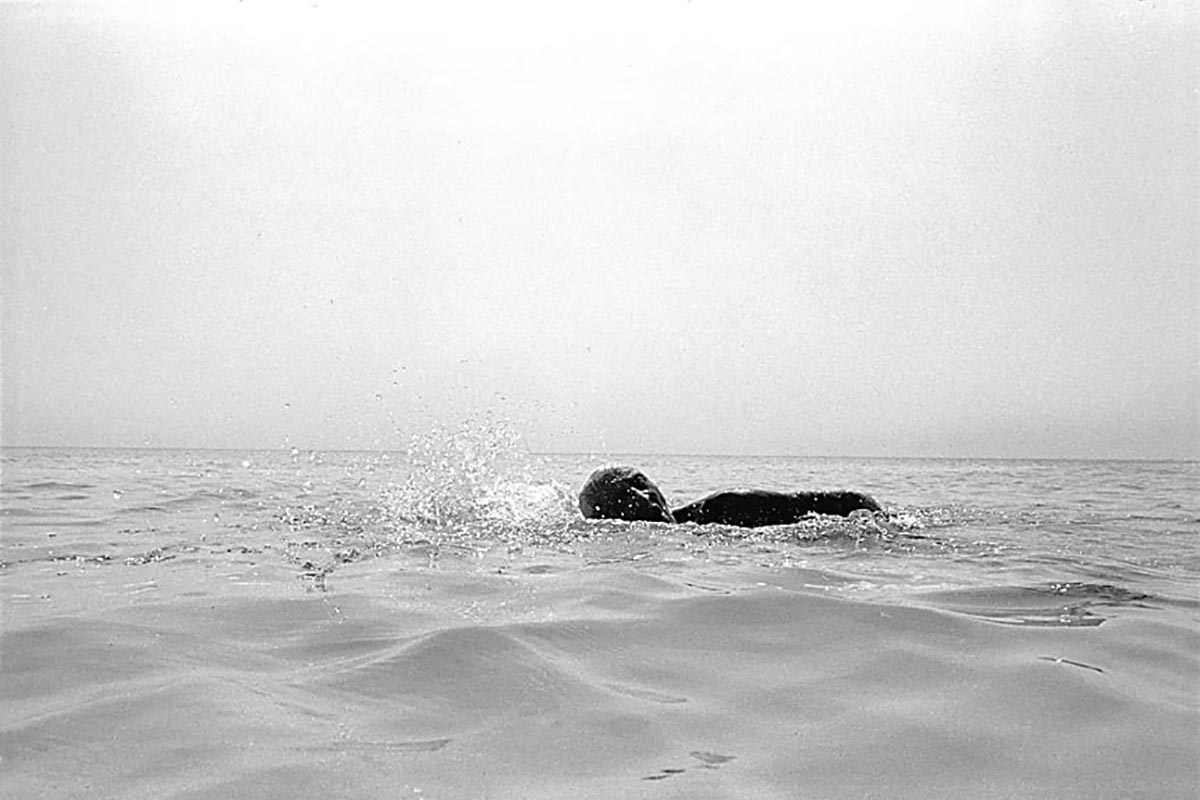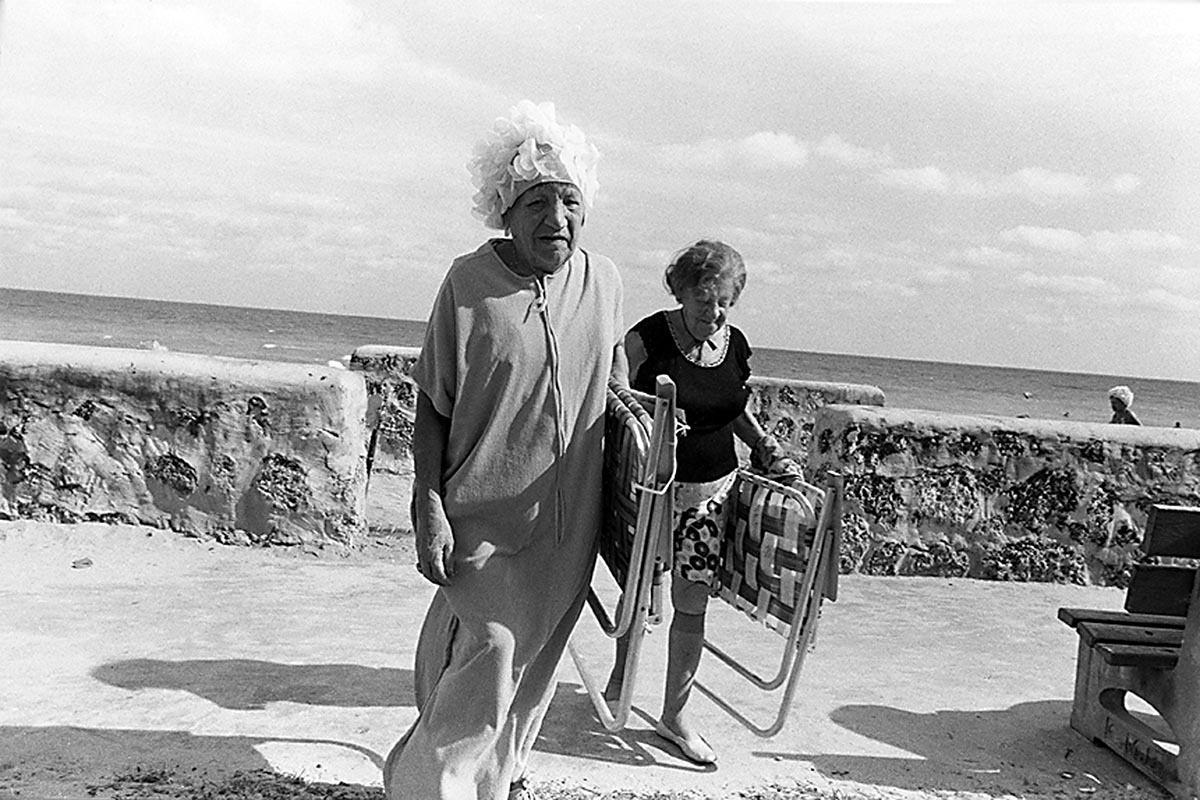South Beach was remarkable when I photographed there, which was almost daily from 1977 to 1986. Actually, it was for a longer period, but that decade constitutes my being fully turned over to making visual sense of life there, which was unlike life anyplace else. Of course, Jewish communities existed from coast to coast, but South Beach, located on the tip of the island of Miami Beach, was cocooned and isolated. Few tourists had reason to go to South Beach then.
I am from there; I was born and lived there. When I wasn’t there I was likely photographing in Haiti; otherwise I was walking the streets of South Beach endlessly. Old-world Jewry thrived with a tropical twist. It was where Jews came to be together in their latter years. In its way, it was a sacred place. These were the Jews of the Greatest Generation, Holocaust survivors among them; refugees from the cold northeast; working-class retirees. The average age was well into retirement. It’s hard, if even possible, for a twenty-something (me, then) to have accurately gauged the average age of its residents, yearlong and seasonal, but I’d have said eightyish.
My plan was to spend a decade living within that community and photographing what I sensed would be the final years of a remarkable epoch, so I returned home to South Beach after graduate school at the University of Colorado at Boulder and got to work. Ten years later, the Art Deco movement, along with other forces, including Miami Vice, the Mariel boatlift, and plans to redevelop Sixth Street South to Government Cut, contributed to economic development, causing the demise of the old-world traditions before attrition would have taken its toll.
The lifestyle vanished like it had never happened. In fact, every year of that decade, I photographed the New Year’s Eve parties that hoteliers had thrown for their guests along Ocean Drive and Collins Avenue, and by the eighth year I noticed the celebrations becoming fewer and less celebratory. This was a barometer for the vibrancy of South Beach Jewry. The last year I did this was in 1988. By then there were just three parties, and they were very lackluster. No longer did local politicians pander for votes by dishing out Dixie cups of vanilla ice cream and singing in Yiddish at the tiny bandstand by the beach at Ninth Street.
I felt alone in my sense of loss. It seemed no one else cared much. There were still social organizations there, but my interests were something else . . . sentient, spiritual, knowing from the inside. I am a conservative Jew. My bar mitzvah was at Temple Emanu-El with the reception at the Fontainebleau Hotel. Growing up, the Seifs were my neighbors. Cantor Seif was the most recognized mohel (ritual circumciser) in all of Miami, so I had Orthodox awareness. However, the real influence was in the air: it was the place itself that was unequivocally defined by a rare ethos.
I do not think of myself as a documentarian, nor do I possess journalistic interests. Further, I am loath to refer to myself as an artist. I was there and responded to what I deemed interesting, with each release of my Leica’s shutter as a sort of affirmation. I’ve long been amazed (horrified, actually) by those who found my photographs “funny,” who found so rich a humanity a source of amusement. That’s fortunately been the least of responses, but nevertheless puzzling. Perhaps it is because we see the elderly as if they are of another world, alienated from our fast-paced, self-absorbed, youth-oriented culture. Maybe it’s because of a fear of our own mortality. In a way, though, the elderly Jews of South Beach did live in another world, by circumstance and by choice. The subsequent generation of Jews and certainly the one succeeding them–mine–are by and large Americanized Jews. We are assimilated. These photographs give testimony that the aged can remain vital. These people are the ultimate survivors, who lived life fully to the end.
